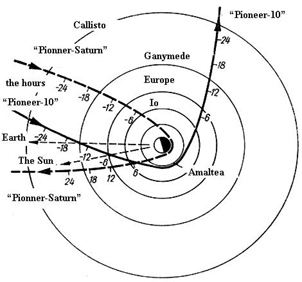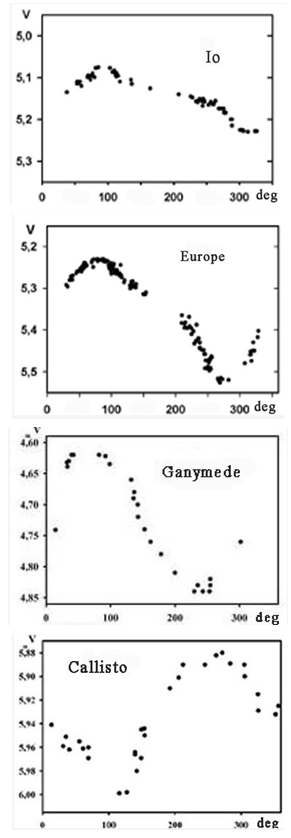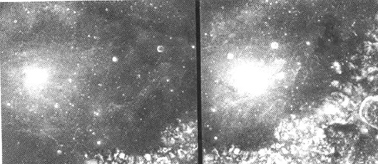-
Paper Information
- Next Paper
- Paper Submission
-
Journal Information
- About This Journal
- Editorial Board
- Current Issue
- Archive
- Author Guidelines
- Contact Us
International Journal of Astronomy
2012; 1(4): 55-61
doi: 10.5923/j.astronomy.20120104.01
On the Cause of Discrepancy Between Ground-based and Spaceborne Light Curves of the Galilean Satellites of Jupiter
V. V. Prokofjeva-Mikhailovskaya , E. A. Sergeeva
Research Institute, “Crimean Astrophysical Observatory”, Nauchny, Crimea, 98408, Ukraine
Correspondence to: V. V. Prokofjeva-Mikhailovskaya , Research Institute, “Crimean Astrophysical Observatory”, Nauchny, Crimea, 98408, Ukraine.
| Email: |  |
Copyright © 2012 Scientific & Academic Publishing. All Rights Reserved.
Photometric observations of Jupiter's satellites in the spectral band V were carried out at the Scientific Research Institute “CrAO”. Their light curves were brought to a phase angle of the Sun equal to 6°. Comparison of these data with other ground-based observations showed good agreement. The cause of discrepancy between data obtained by spacecrafts is a backscattering effect of sunlight, which depends on the phase angle of the Sun. The satellite Callisto has a dark leading hemisphere due to the fact that at this distance the magnetic field of Jupiter appears to be significantly weakened, and bodies of the interplanetary medium bomb it out.
Keywords: Photometric Observations, Jupiter's Satellites, Spacecraft Observations
Cite this paper: V. V. Prokofjeva-Mikhailovskaya , E. A. Sergeeva , "On the Cause of Discrepancy Between Ground-based and Spaceborne Light Curves of the Galilean Satellites of Jupiter", International Journal of Astronomy, Vol. 1 No. 4, 2012, pp. 55-61. doi: 10.5923/j.astronomy.20120104.01.
Article Outline
1. Introduction
- A feature of modern studies of the solar system is a large number of new data obtained by spacecrafts. There is a situation when the data obtained from space are more reliable. On January 7, 1610 Galileo Galliley was the first to discover four satellites of Jupiter - Io, Europe, Ganymede, Callisto. Currently, these satellites are well-studied in different ways. The satellites have weak atmospheres so they are named the atmosphere-less bodies. The Galilean satellites are known to be always oriented to Jupiter by one side. They are synchronous: their axial rotation period is equal to the period of their revolution around Jupiter. Satellite surfaces have leading and trailing hemispheres and they have different reflectivity under the influence of space weather and bombardment by small bodies of the solar system. The data concerning surfaces of the atmosphere-less bodies of the solar system we get by investigating the scattered sunlight. Sunlight scattering laws are applicable to studies of the Galilean satellites of Jupiter as well. Galilean satellites are located at a distance of about 5 a.u. from the Sun, so it can be assumed that the sun rays fall on them as a parallel beam. In this case the coherent backscattering effect is easy to be observed. The satellites Io, Europe and Ganymede are in orbital resonance - their orbital periods are in the ratio of 1:2:4. At the time, when Ganymede makes one revolution around Jupiter, Europe makes two and Io - four. The theoretical prediction of the tidal nature of the volcanism on Io has found a real confirmation. The orbit of Io is located in the part of Jupiter’s magnetosphere where the streams of charged particles are particularly dense. The magnetosphere rotates with Jupiter with a period of about 10 hours. It sweeps away from the surface of Io about 1000 kg of material per second. Due to the rapid rotation of Jupiter's magnetic field, charged particles along the orbit of Io make a plasma torus. The temperature in the torus is estimated as 50000-100000 K. The material of the torus is rotating at a speed almost equal to the velocity of Jupiter's magnetosphere, so the particles in it move much faster than Io. Their relative speed reaches 57 km/sec that causes an intense bombardment of the back surface of the satellite. Io interacts with Jupiter’s magnetosphere and torus, forming a powerful electrical generator that generates 400,000 volts voltage and generating an electrical current of about 5 million amperes that flows along magnetic field lines to the ionosphere of Jupiter.
2. Space Research of the Galilean Satellites of Jupiter
- The spacecraft "Pioneer 10" was the first to fly past Jupiter on December 4, 1973 and transmitted to Earth the images and measurements of various physical fields of Jupiter. One year later on December 2, 1974 the spacecraft "Pioneer 11" was at even closer distance to the planet, carried out detailed measurements and being deployed by powerful gravitational field of Jupiter it went away in the direction to Saturn.Figure 1 shows the flight trajectory of the Pioneer spacecrafts passing by Jupiter. The part of the trajectory from the side of the Sun is seen to be sufficiently small. Most of observations of the Galilean satellites were made from the passing trajectories when the phase illumination angle of satellites was quite small.
3. Ground-Based Photometric Study of the Galilean Satellites and Effect of the Phase Angle of the Sun
4. Features of the Sunlight Scattered by the Atmosphere-Less Bodies of the Solar System
- All the atmosphere-less small bodies of the solar system are covered with regolith. The analysis of lunar soil brought from the Sea of Fertility by the spacecraft "Luna-16"[25],[13] showed that the soil probe is a fine regolith fractions ranging in size from microns to millimeters. Its density is low and is 1.2 g/cm3, and the average size of particles increases with depth from 62 to 114 microns. The amount of glass in the soil increases with decreasing size of particles. It was concluded that the formation of fine particles of soil is associated with energetic bombardment of the lunar surface by meteorits. Vitrification of particles is a result of high-speed impacts of meteoroids. Barabashov and Akimov[4] studied indicatrices scattering of the ground of the upper part of the column and concluded that indicatrices are close to observations of the Moon. They concluded that a certain increase in brightness of the moon at the full moon must be due to the light scattering on the microrelief, which has grain sizes of less than 1 mm.Data on the presence of fine dust on surfaces of atmosphere-less bodies have been confirmed by many images taken aboard spacecrafts. For instance, the surface of asteroid 25143 Itokawa is known to be covered with large stones, as well as with the smallest dust of strong flowability.Thus, in the broadest physical sense surfaces of atmosphere-less bodies of the solar system are rough or intensely rough. The physical properties of light scattered by such surfaces have been actively studied both theoretically and in laboratories over the last two decades. The review by V.L Kuzmin and V.P. Romanov, dedicated to these issues, demonstrates rapid and successful development of new experimental and theoretical physics[14]. The special chapter is devoted to the description of light scattering by very rough surfaces, which are the same on the small bodies of the solar system.The coherent backscattering effect was predicted earlier in 69-73 years of the last century, although astronomers have previously known about changes in brightness of the disk of the observed body[1]. Studies of the effect were carried out almost simultaneously in Seattle, Amsterdam and Grenoble, and then in many laboratories of physics around the world. The opposition effect of increasing brightness of atmosphere-less bodies was explained after the discovery and study of the coherent backscattering in disordered systems of particles[14],[15],[5],[6]. The phenomenon proved to be universal, since it is associated with the most common features of light scattering by porous media.The phenomenon of coherent backscattering consists in a sharp increase in intensity of the light scattered by the strongly inhomogeneous medium at a small solid angle in the direction opposite to the direction of light incidence. Each wave, bypassing a number of scatterers, was found to correspond to the wave going around the same number of scatterers in the opposite direction. Such waves are coherent. The interference was shown to occur only in the case of scattering backward, since in this case, the optical paths of waves and the phase shifts will be strictly identical. On the basis of studies of the lunar soil it can be concluded that the upper layer of regolith is porous and fine-structured, and on the surfaces of atmosphere-less bodies it is distributed unevenly: not only its thickness and density, but particle size may vary. As a result of quakes occurring during collisions of bodies, small fraction of the regolith can be moved into the lower places; this leads to the formation of spots on the surface of the body, which can be detected in ground-based observations of the solar radiation scattered by the body’s surface. These spots formed by coherent backscattering are only to be observed at small phase angles of the Sun.The coherent backscattering effect of light during the last two decades has been studied theoretically and experimentally. The effect was shown to occur when the sizes of scattering particles are comparable to the wavelength of incident light, and surface of the body has a powdery structure, that takes place on small bodies of the solar system.After the discovery of the coherent backscattering effect of light publications that explain the opposition effect of increasing brightness of atmosphere-less bodies of the solar system with the help of this effect[11],[16],[17]) quickly appeared. Having analyzed photometric data J.G. Shkuratov[24] concluded that the opposition effect of brightness (OEYA) is characteristic for nearly all the solid surfaces of celestial bodies, and the amplitude of the effect of light bodies (E-type asteroids and icy satellites of planets) is higher than the dark ones have. Very light surfaces give a narrow opposition surge in brightness with an amplitude reaching the increase of brightness up to 2 times. In subsequent years the opposition effect of brightness in many atmosphere-less bodies of the solar system has been actively researched, and also models of coherent amplification of backscattering intensity of light are being developed (Figure 3).
5. Comparison of Ground-Based Photometry and Data Obtained Aboard Spacecrafts
- In 2006, at the SAI under the direction of N. Emelyanov the comparison of light curves of the Galilean satellites of Jupiter was carried out. It was performed depending on the angle of their rotation[20], derived from the mapping of satellites from the spacecraft that is marked in Fig. 4 with solid lines, and ground-based photometry marked with dotted lines. The discrepancy of comparable results was found[21], but no explanation has been given to it. In the context of this discrepancy the task of photometric studies of the Galilean satellites of Jupiter was set at the Research Institute "Crimean Astrophysical Observatory".
6. The Cause of Discrepancy Between Ground-Based Photometry and Data From Spacecrafts
- The cause of discrepancy between ground-based photometry of Jupiter's moons and light curves obtained from the maps constructed on the basis of data from spacecrafts, is a different direction to the satellites from the Earth and spacecrafts. From the Earth all the photometric observations are carried out at phase angles of the satellites’ illumination by the Sun from 0 to 12 degrees. Under these conditions, satellites may have bright spots due to the coherent backscattering of solar radiation. When making photometry from the Earth radiation of these spots changes the light curve of the satellite, and it differs from the brightness curve obtained by spacecrafts which took images of satellites, in most cases, from passing trajectories, moreover the phase angle of the Sun in obtaining these images could be significant. So, in other words, when constructing maps on data from satellites the law of brightness gain of some parts of satellites, due to the coherent backscattering of sunlight, was completely ignored, because there was no gain due to large phase angles of the Sun.Note that D. Morrison and N. Morrison in the survey[19] referred to the results of a study of the opposition brightness peak of Jupiter's satellites at small phase angles. The value of the opposition effect for Ganymede is about 0.m1. For Callisto, the opposition effect for the front (leading) side (the orbital phase angle 0°-180°) reaches 0.m32, and for the back (trailing) side (the orbital phase angle 180°-360°) is only about 0.m12.The surfaces of Ganymede and Callisto are supposed to have a sufficiently large number of regolith. Based on the known properties of light scattering by regolith, the discrepancy between light curves of these satellites, obtained from ground observations and from space, should be the highest that is seen in Figure 4.In recent years, a new effect in light scattering called "near-field effect" has been described by physicists. It was predicted theoretically by prof. Gadomskii in 1994[12]. In the XXI century a number of publications devoted to the manifestation of this effect in astronomical observations appeared[22]. The authors conclude that the phase dependence of intensity of the scattered light is determined by the interaction of two mechanisms: coherent backscattering and near-field effect due to the inhomogeneity of light waves in close vicinity to the components of an assembly of particles. The first mechanism is effective in low-density assembly, while the second - in more compact structure consisting of particles whose size and distance between them is comparable to the wavelength. To divide quantitatively contributions of these mechanisms when modelling or by measurement is next to impossible.Note that being observed from the Earth Jupiter's satellite Callisto has a trailing hemisphere brighter. Callisto has an orbital radius of about 2 million km., it is about 26.6 Jupiter’s radii. Due to the large distance from Jupiter its magnetic field has little effect on the moon Callisto. Its leading hemisphere appears to be a subject to bombardment by comets, asteroids, solar wind particles, and it is therefore the most cratered object of the solar system.All the observations of mutual phenomena of Jupiter's satellites are carried out from the Earth in the range of phase angles from 0° to 12o. When analyzing observations should be used photometric light curves of Jupiter’s satellites obtained from the Earth at the same phase angles at which observations of mutual phenomena are carried out. For this aim light curves of Jupiter’s satellites, depending on their rotation, are to be obtained for different ranges of phase angles.
7. Conclusions
- The brightness distribution across the disk of the satellite may vary strongly depending on the phase angle of the Sun. The discrepancy between the course of light curves obtained by spacecrafts (SC) and photometry carried out from Earth, is explained by the fact that satellites were photographed from spacecrafts in a wide range of phase angles of illumination of satellites by the Sun but ground-based observations were carried out just in the range of phase angles from 0° to 12°. So, the opposition effect in most cases is not taken into account in observations from spacecrafts. The surfaces of Ganymede and Callisto are covered with regolith, which provides the coherent backscattering of sunlight and the greatest difference between the ground-based light curves and those ones obtained by spacecrafts.It has become a known fact that during light scattering by the bodies of the solar system the scattering characteristics of the regolith that covers the surface must be taken into account. The upper layer of regolith is composed of small particles that are comparable to the wavelength, and has a large porosity. These properties provide the coherent backscattering, discovered and studied in laboratories in the 80s of the last century. We must also take into account the near-field effect, which occur in denser media. It is being actively studied and used now.The discovery and study of the laws of light scattering - the coherent backscattering and near-field effect - can, to a great extent, change the brightness distribution across the disk of Jupiter's satellite, depending on the phase angle of the Sun. N.V. Emelyanov[9],[10] had a reason to place a great emphasis on it, suggesting that effects of variations of self-reflection properties on the satellite surfaces should be taken into account. The accuracy of determination of coordinates in the calculation of mutual phenomena of Jupiter’s satellites is ten times worse as expected. Note that the satellites which are in a strong magnetic field of Jupiter and Saturn, have a brighter leading hemisphere. The satellites Callisto and Iapetus, which are far away from these planets, are known to have darker leading hemisphere, which can be attributed to the bombardment by interplanetary dust, asteroids and comets.To process the photometry of mutual events of Galilean satellites it is recommended to use the latest achievements of physics and astrophysics in light scattering by intensively rough surface (regolith). In processing mutual phenomena of Jupiter's satellites it is desirable to use light curves of satellites, obtained at the same phase angles of the Sun at which these observations were made
 Abstract
Abstract Reference
Reference Full-Text PDF
Full-Text PDF Full-Text HTML
Full-Text HTML


